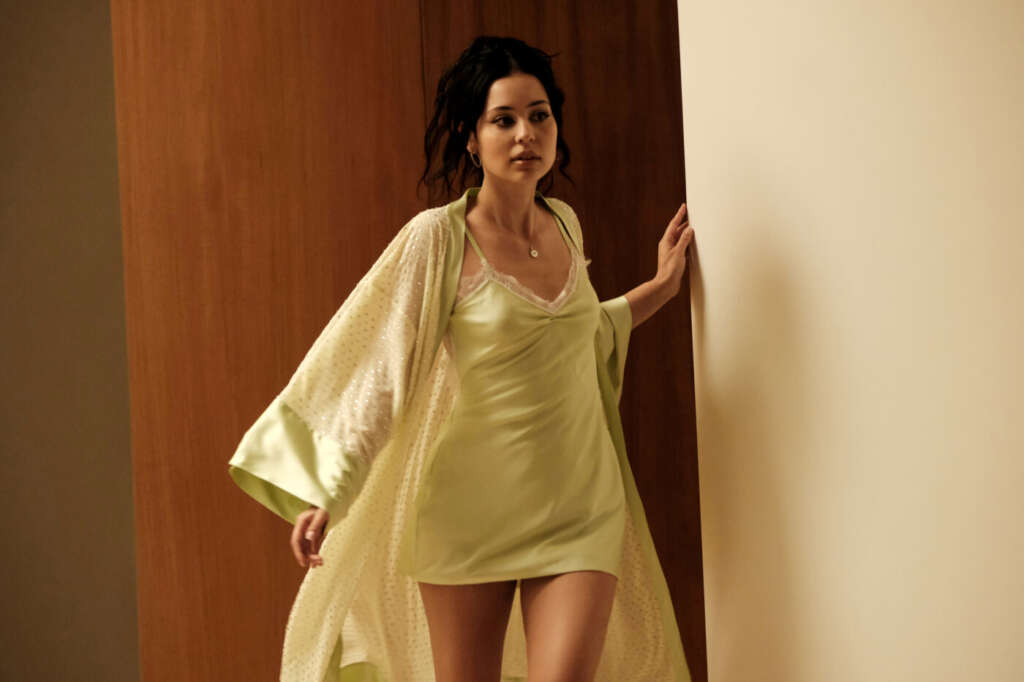I’m 12-years-old and at a sleepover with two of my best friends. It’s well after midnight and we’ve crept out of our Groovy Chick sleeping bags to sneakily turn the television back on, praying my parents don’t hear us as we slide the volume down to its lowest level.
Hear what, you might be wondering? Well, hear that we’re rewatching Forgetting Sarah Marshall for the fourth time that night. Specifically, we’re rewatching the opening scene in which Peter (Jason Segel) drops his towel to reveal…everything. We’re in awe, glued to the screen like we’ve just seen the rarest species of animal (and to a group of 12-year-old girls, a naked man is pretty close), we’re fascinated and equally terrified.
Teenagers nowadays don’t need to execute such stealthy missions. Not only is there an abundance of porn available at their fingertips on a phone or laptop, but they could just tune in to the first thirty seconds of Euphoria’s second season to bask in the image of a fully naked body or, more appropriately, bodies.
Naked bodies are in abundance in Sam Levinson’s much-discussed teen drama. They’re in the shower, they’re having sex, they’re even taking a piss in the hallway while performing an epic seven-minute monologue. Nudity is practically its own character and one that has drawn more controversy than Nate Jacobs. But is it a needless display for shock value, or an ingenious way of desexualising our genitals once and for all?

No more cringe
Typically, nudity on screen is synonymous with sex or humiliation – or, in the case of The Inbetweeners, both at the same time. Yet, Euphoria reminds us that the reality of nudity is often mundane. Characters are seen in the shower or getting dressed (and let us not forget the infamous bathroom scene in season two’s first episode that had the internet referring to the actor as “toilet guy” from here on out). Levinson sometimes frames the naked body, not as something precious, but instead something rather boring – the thing that’s just underneath all our clothes.
Much of the criticism surrounding Euphoria is centred around the sheer volume of nudity, whether its context is sexual or not, but it’s exactly this desensitization that works to normalise the naked body. I don’t think any of us will quite forget that 30-penis scene from season one, for example, but I barely blinked the next time one appeared (which, unsurprisingly, didn’t take very long). It’s like the more we see genitals, the less we giggle and gasp, and I imagine sex education lessons become a lot less awkward too.
Fair game
Of course, cis-female nudity is nothing new in television and film, but the sight of a penis on our screens has historically been about as rare as a total eclipse. Yet I’ve probably seen more in this show alone than I have in my own sex life (sigh). Perhaps, this phallic inclusion is an indication of a more level playing field in the world of on-screen nudity, finally. Euphoria certainly isn’t alone in its endeavour either. Man’s little friend has been awash in television this year, from the bizarre animatronic one in Pam & Tommy, to Harry Goldblatt’s impressive package in And Just Like That…
While the gender ratio of nudity in Euphoria is pretty impressive by society’s standards, it’s worth noting that only the women involved have reported to have had issues with filming nude scenes. Sydney Sweeney, Chloe Cherry, Martha Kelly and Minka Kelly have all spoken about feeling uncomfortable with the level of nudity written for their characters, and questioned its necessity.
On all occasions, it seems Levinson has happily obliged and rewritten the scenes accordingly, but it does beg the question of whether a naked woman’s body can ever quite be removed from the sexualised context society has framed it in. The male gaze is cinema’s oldest friend, after all.
The Cassie dilemma
There’s an argument that this is happening with Sweeney’s character Cassie, who features nude far more than any of her fellow classmates. Her breasts alone seem to have popped out at the drop of a hat, or bra, this season. It’s hard not to wonder if Cassie’s nudity is the result of the male gaze, particularly as the director is an older man.
But it’s important to remember the very nature of her character is of someone obsessed with using her sexuality to seek validation from men, and her excessive nakedness is perhaps a reflection of that. Especially, when you consider that the other female characters, such as Alexa Demie’s headstrong Maddy, are never shown naked to quite the same extent.
Hopefully, the third season, which won’t be coming out for a whole two years, will aim to tackle Cassie’s complex insecurities as well as address some of the wider issues concerning its nudity, like the inclusion of a more diverse palette of bodies (currently the majority are cis, white and skinny). But Euphoria’s uncensored approach is definitely a step in the right direction towards removing some of the mystery and shame that so often surrounds nakedness. Most importantly, at least teenagers no longer have to sneak around at two in the morning to get a glimpse of what a naked body looks like, and that sounds like progress to me.



